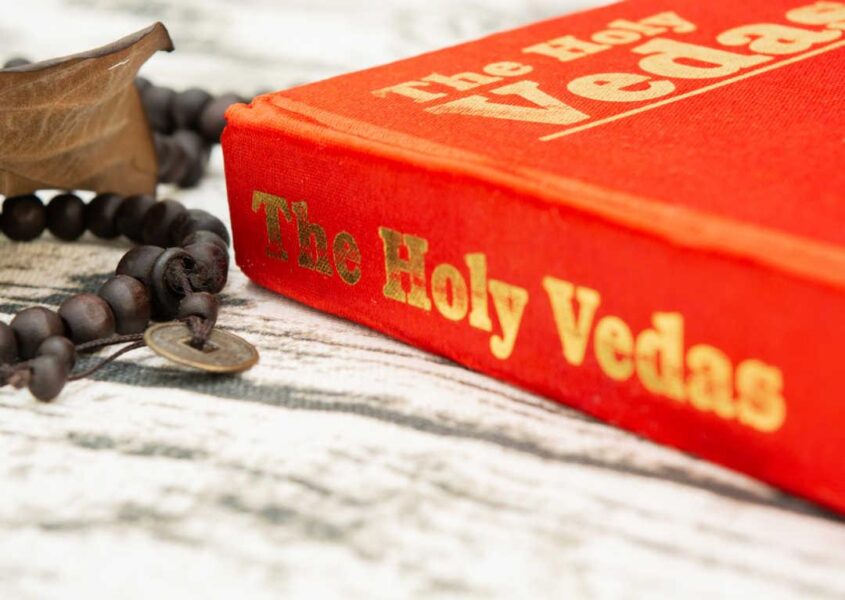The Vedantic Knowledge

The Rishis in ancient India were the enlightened beings who understood the inner world and its relationship with the external world. Therefore, all ancient Indian knowledge came from the Rishis. Normally, the Rishis were also the Gurus who imparted knowledge to their disciples.
The word Veda means knowledge. It is derived from the Sanskrit word ‘Vid,’ which means to know. This divine knowledge was revealed by the Supreme Reality to the Rishis more than five thousand years ago. Since there is no human author of the Vedas, the Vedic knowledge is called Apaurusheya. This knowledge was verbally transferred from the Rishis to their disciples for generations. Veda is therefore also referred to as ‘Shruti,’ meaning that is heard.
Krishna Dvaipayana compiled and classified the vast Vedic knowledge into four main parts – Rigveda, Samveda, Atharvaveda, and Yajurveda. Vyasa means the compiler. Since Krishna Dvaipayana compiled the Vedas, he is also more commonly known as Veda Vyasa.
But, before the Vedas were documented, how was it possible to transfer the vast Vedic knowledge from one generation to another through just verbal communication? You can see the wisdom of the Rishis and how effective it was to preserve the Vedic knowledge in its pristine form.
The Rishis devised methods to arrange every letter to form the words, hymns or ‘Suktas,’ and verses or ‘Mantras,’ to represent the Vedic knowledge. The Suktas and Mantras are concise, which made memorization of them easy. However, their concise form also made them cryptic. Vedic scholars like Shankara and others have expounded on the hidden wisdom throughout generations. Since these scholars themselves have been enlightened beings, their commentaries on the different aspects of the Vedas have been authentic and inspiring.
The oral recitation of the Vedas, Shruti, consists of chanting Vedic mantras in well-defined tones and patterns. Such recitations, called ‘Pathas,’ were very helpful in memorizing the Mantras. The three main formats of Pathas are the Prakriti Pathas consisting of Samhita Patha, Pada Patha, and Krama Patha.
There were eight ways, known as the Vikritis, of memorizing Vedas. These are Jata Patha, Mala Patha, Shikha Patha, Rekha Patha, Dhvaja Patha, Danda Patha, Ratha Patha and Ghana Patha.
The Pathas involve elaborate ways to create repetitive patterns of the words and letters and the accents and tones. Even today, the Vedic mantras are recited using the same scientific traditions that have maintained the fidelity of the Vedas.
Since the Supreme Reality revealed the knowledge, the Vedas are the most authoritative, sacred, and eternal divine knowledge that has retained its pristine fidelity to this day.
Vedic knowledge is not just spiritual. It includes knowledge in Sciences, Mathematics, Astronomy, Astrology, Architecture, Aeronautics, and much more. The concepts of Vedic Mathematics are widely available on the internet today. Vedic Mathematics deals even with differential equations, showing how advanced Vedic knowledge has been. Ayurveda, a subset, or ‘Upveda,’ of Rigveda, is a widely used medical system in the Indian subcontinent.
The ancient Vedic system mainly explained the rituals and fire sacrifices or yajnas in the spiritual field. Vedanta is the evolution of the ancient systems and mainly comprises the knowledge summarized in the Upanishads.